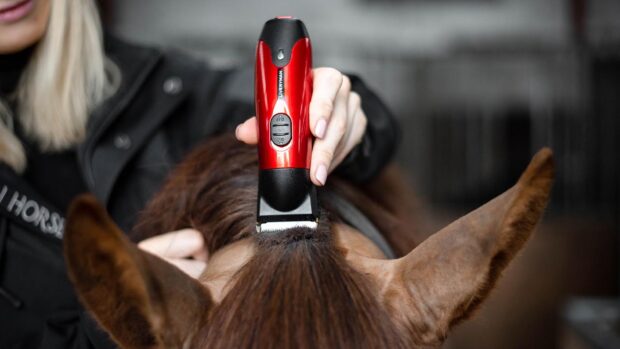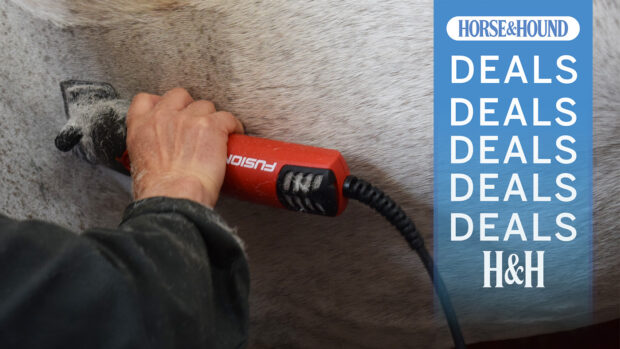Q: I have recently bought a 15hh grey gelding. I would also like to compete in some dressage and novice showjumping classes at local shows this summer.
I want my horse to look as smart as possible and, as part of my turnout, would like to pull his tail. I have pulled manes before but I have limited experience of tail pulling.
Can you please explain howI do this in order to achieve a good result?
Liz Clemence replies: A well pulled tail certainly does help improve a horse’s overall appearance. The best time to do it is after exercise when the horse will be warm and his pores open.
A pulled tail should look symmetrical and be pulled far enough down the dock to allow the shape to fan out naturally into the length of the tail.
Before you set to work look at the shape of your horse’s quarters and watch how he carries his tail. This will enable you to judge correctly how far down the dock you are going to need to pull in order to achieve the desired affect.
Wear a lightweight pair of rubber gloves when tail pulling as it will help you get a better grip on the hair and give some protection against blisters. Surgical gloves are ideal.
Remember that your own safety is paramount and pulling tails puts you in a vulnerable position.
Don’t take any unnecessary risks, be aware of your horse’s moods and reactions and, unless your horse is exceptionally trustworthy, have a reliable second person to hold your horse while you are carrying out the task.
As an extra safety precaution, if a horse is being particularly unpredictable, ask your helper to back him up to a closed stable door.
You can then stand on the other side and pull the tail without risk of being kicked. The use of a twitch will also help to calm a fractious horse, allowing you to finish the job much more quickly and efficiently.
How to pull
When pulling a tail, lift the top hairs and pull from underneath. Working mainly to the sides, pull evenly downwards, taking out small amounts each time so you don’t leave bald patches.
Stop at regular intervals to see which areas need more attention. You will probably also have to remove some hair from the top of the tail to reduce the thickness and allow the hair to lie flat.
If you are pulling the tail for the first time, or you are re-pulling a tail that has been left to grow particularly thick, it may take a few goes before you achieve the shape you want.
Applying a tail bandage for short periods each day will help flatten the hair and train the shape of the tail.
The tail must also be trimmed to the correct length at the bottom in order to achieve an overall balanced picture. As a rough guide, the tail should usually hang about 4ins below the point of the hock, so that when the horse is moving it hangs level with the hocks or slightly below. Watch how your horse carries his tail before getting out the scissors.
When you cut your horse’s tail, ask a helper to gently lift it to its normal carrying position, then using either clippers or very sharp scissors, cut the tail across at the required length, making sure you’re standing to the side of your horse.
A thinning knife or clippers can be used to tidy the top of the tail if the horse really objects to you pulling it but the result is rarely as polished.
Your horse’s tail will now need regular attention, as well as bandaging, tomaintain its shape.
Read more about improving your horse’s turnout:



